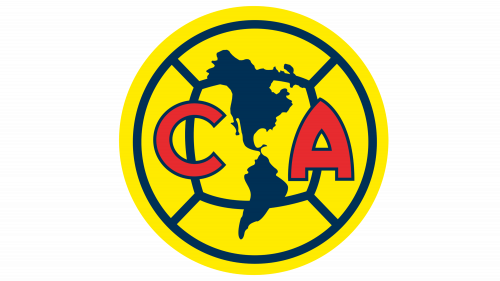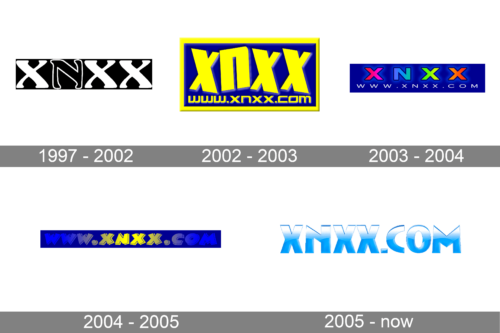
- Version
- Download 88
- File Size 28.91 KB
- File Count 1
- Create Date December 12, 2024
- Last Updated December 12, 2024
Club América, one of Mexico’s most iconic and successful football clubs, has undergone numerous logo transformations since its founding in 1916. Over the years, the logo has reflected the club’s growing stature and its deep connection to Mexico’s culture and heritage. Known as Las Águilas (The Eagles), Club América’s visual identity has consistently evolved, yet it has maintained key elements that make it instantly recognizable. Below is a journey through the key stages of the Club América logo.
1916: The First Badge
The original logo for Club América was introduced in 1916, featuring two overlapping letters “CA”. The design was minimalistic, with the letters executed in a stylized wishbone typeface and set in a muted dark blue color. This early badge was used for only a few months but laid the foundation for future designs.
1917 – 1918: A New Era
In 1917, the Club América logo evolved into a more modern design. The emblem featured a light yellow circle stylized as a globe, outlined in dark blue. Inside this globe, the letters “C” and “A” were placed symmetrically, creating a balanced and clean look. This marked the club's first venture into using more vibrant colors.
1919: A Geometric Shift
The 1919 logo was minimalistic yet highly memorable, featuring an outlined monogram where the letters “C” and “A” were designed as triangular horseshoes. The letters were placed under a sharp 90-degree angle to one another, creating a unique, geometric pattern. The design was framed by a thin circle, focusing attention on the monogram's angular style.
1920 – 1921: Aztec Influence
The 1920 logo introduced Aztec-styled dark blue lettering, emphasizing the club’s Mexican heritage. The lettering was arranged in two levels inside a circular blue frame, with the framing becoming thicker, making the badge feel bolder and more substantial.
1921 – 1938: Back to the Globe
In 1921, Club América returned to the globe logo from 1917, refining the design with minor adjustments to the contours of the letters. The club’s logo continued to evolve, with small but meaningful updates, such as adopting the colors of Mexico's flag in 1923.
1923 – 1925: Mexican Pride
The 1923 logo incorporated the colors of the Mexican flag—green, white, and red—inside a circular frame, with a stylized eagle in white set against a black background. This emblem encapsulated the club’s Mexican identity and showcased the eagle, a central symbol of Mexico, in its design.
1938 – 1946: The Triangular Crest
The 1938 redesign introduced a sharp, triangular crest, with a blue background and a geometric yellow eagle flying left. The logo's design moved away from the circular badges of earlier years and included a red outline around the circle, symbolizing both strength and national pride.
1947 – 1960: Refining the Roundel
In 1947, Club América began to settle on the design elements that would become its signature look. The logo took on the round shape we recognize today, with the eagle and the map of Mexico on a yellow and blue globe. The new logo incorporated smooth lines that mimicked the texture of a football, further establishing the club’s identity as a football powerhouse.
1967 – 1974: Solidifying the Icon
During this period, the Club América logo saw minor tweaks, including a return to a cleaner, more modern aesthetic with brighter colors. The red “CA” monogram became thicker and more stable, gaining a geometric shape that would remain in future logos.
1981 – 1999: Color Intensification
Throughout the 1980s and into the early 1990s, the logo underwent several revisions, becoming brighter and more vibrant. The red letters became more prominent, and the color palette was intensified to give the badge a stronger presence. In 1994, the logo saw a bolder redesign with thicker outlines and darker hues, enhancing its dramatic appearance.
2000 – 2008: The Return of the Double Outline
The Club América logo’s design in 1999 saw the return of a double outline around the circles, giving the emblem a more polished and professional look. In 2008, the colors were muted slightly, making the logo appear more modern and sophisticated, while the overall composition remained unchanged.
2010 – 2017: Strength and Professionalism
The 2010 logo redesign focused on strengthening the lines and contours, giving the emblem a more robust and professional feel. The colors of the globe became deeper, and the boldness of the “CA” monogram gave the club a more confident and masculine identity.
2017 – Present: A Refined Legacy
The latest redesign, launched in 2017, adjusted the red letters to be smaller and bolder, further refining the logo's clean, geometric design. The color palette was shifted to darker, deeper tones of blue and red, while the continents on the globe were redrawn for greater detail and clarity. This version of the logo reflects the club’s continued growth and professionalism in the world of football.
From its early beginnings in 1916 to its current iteration, the Club América logo has been a testament to the club's enduring legacy and evolution. Through multiple redesigns, it has remained rooted in Mexican identity while adapting to modern design trends. The eagle and the globe continue to serve as symbols of Club América’s strength, pride, and position as one of Mexico's most successful football clubs.
| File | Action |
|---|---|
| Club América Logo.png | Download |








